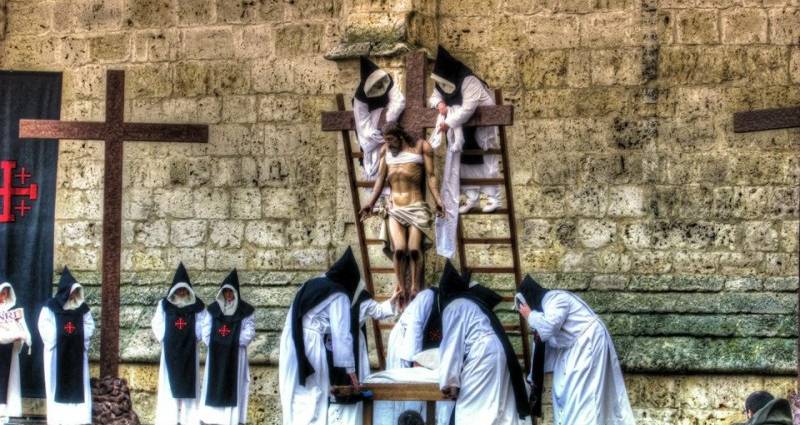Semana Santa across the Costa Blanca

Holy Week (Semana Santa) is one of the most importanttraditional events of Spain. Across the Costa Blanca each town and village has its own traditions and its unique way of celebrating Semana Santa.
Semana Santa is celebrated in the week leading up to Easter, the essence of the week is a remembrance of the last week in the life of Jesus Christ, his crucifixion and resurrection.
The processions begin on Viernes Dolores, followed by Palm Sunday. There are also processions during the week culminating in the procession of resurrection on the Sunday morning.
During there are processions of floats (pasos) of lifelike wooden sculptures of individual scenes of the events that happened between Jesus' arrest and his burial, or images of the Virgin Mary showing grief for the torture and killing of her son. Some of the sculptures are of great antiquityand are considered artistic masterpiecesas well as being culturally and spiritually importantto the local Catholic population.
The processions are organized by hermandades and cofradías, religious brotherhoods. During the processions, the lifelike wooden sculptures called "tronos" and they are carried through the streets by the members dressed in coloured robes, with conical hats, or capirotes, used to conceal the face of the wearer, collectively known as "Nazarenos".
These robes go back to the Spanish Inquistion, when the Penitentes sought forgiveness for their sins. The shape of the capirotes signified their penance and yearning to be closer to the heavens. They hid their identities as they mourned the pain and suffering of Jesus Christ on the cross. The Penitentes carry candles or wooden crosses, they may even walk barefoot with shackles and chains on their feet as sort of penance.
The Palm processions are more light-hearted and joyful than the rest of the Easter. The Palm Sunday (Domingo de Ramos) is the only celebration that is not about Jesus' death. People carrying palms line the streets to commemorate the triumphant entrance of Jesus into Jerusalem for Passover. He rode in on a donkey (symbol of peace, as opposed to riding in on a horse, more war-like).
After Palm Sunday the mood takes an altogether more sombre turn for the rest of the week. In many towns there will be daily parades every evening starting at the parish church from where one of the huge wooden statues that usually rests in a side chapel will be carried through the streets to solemn music.
On Thursday (the night before Good Friday) sees the procession of silence to mourn the capture of Jesus Christ in the gardens of Gethsemany. They are silent, tragic processions, the faces are covered and the only music is a solemn drum.
As the passion of the crucifixion gives way to the celebration of Easter Sunday, the mood changes to one of jubilation; the floats are covered with flowers, traditional sweet cakes such as monas, torrijas and pestihos are eaten and the final parades are played out to triumphant music.
Spain is completely transformed during Semana Santa. Everybody turns out to experience one of Spain's most traditional events to the full. Semana Santa is celebrated with a great deal of emotion. People take an active role in its events and traditions. All day and night the streets are filled with the beat of the drums, masses of colourful flowers, and the consummate art of religious sculpture, all combining to produce a highly moving atmosphere.









